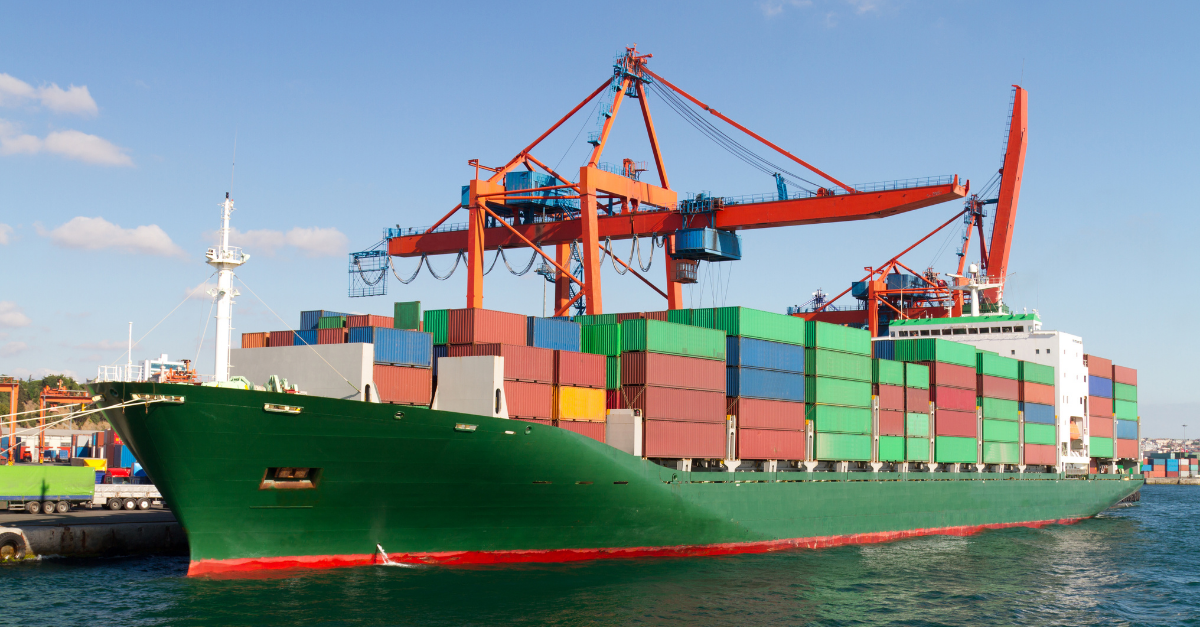Whether you’re looking at air or ocean freight rates, both markets are still on an upward trend for short-term and long-term rates. With Christmas and peak season coming, there is no sign of freight rates going down any time soon.
Michael Braun, the VP of customer solutions at Xeneta, and Thorsten Diephaus, the director of strategic accounts at Xeneta, presented at our 7ConNetwork Virtual Networking Conference in September. In their keynote, they delivered an insightful overview of the ocean and air markets.

What Caused the Increase in Ocean Freight Rates?
A complex combination of factors has led to skyrocketed freight rates over the last couple of years. COVID-19 fueled demand and disrupted supply, and port congestion, blockages, and a lack of ships and capacity have led to colossal increases in the cost of shipping cargo.
Like ripples expanding across the water from a single disturbance, each disruption in the supply chain affects the next part of the chain and so on. This ripple effect means disruptions have been multiplied, which has contributed to significant turmoil in the market.
Increased Shipping Demands
At the beginning of the coronavirus pandemic, people were forced to stay home and, in many cases, work from home as well. This meant products for at-home offices were being ordered, such as laptop computers, desks, and chairs. People were also spending their money buying products online instead of paying for excursions and other in-person experiences that don’t require shipping.
Canal Blockages and COVID Shutdowns at Ports
In March of this year, the shipping vessel Ever Given got stuck on the Suez Canal in Egypt. This blockage lasted 6 days and impacted about 330,000 TEU (55,000 TEU per day).
In May, COVID outbreaks among dock workers meant restrictions and reduced operating capacities at the Yantian International Container Terminal in China for weeks. This caused major supply chain disruptions and dramatic delays and congestion in shipping, as this terminal operates with global capacities.
In August, the Meishan terminal at the Ningbo-Zhoushan Port in eastern China shut down after a dock worker tested positive for COVID-19.
Congested Ports
One of the main reasons for increased ocean freight rates is congestion. Ports all over the world are experiencing congestion, as these trade gateways are overcrowded with ships.
Right now, vessels are piled up at the Port of Long Beach again, with about 44 vessels lying in front of the harbor in wait for their berthing window. This is worse than the congestion we saw at Long Beach in February.
Shipping Delays and Longer Transit Times
Much of the worldwide fleet capacity is bound on the water or lying around in ports or terminals, which creates significantly longer transit times.
A lot of container rollovers are also occurring, where the containers don’t get loaded onto their scheduled ship and, instead, are accommodated on a subsequent shipping vessel. These rollovers may be due to carriers overbooking cargo or vessels skipping their loading port, and they lead to delays.
Schedule reliability is down to record-level lows. In the past, a regular shipment going from Asia to Europe and back would take around 65 to 70 days. Now, this same shipping route is taking around 100 days. Only 10 to 15 percent of the regular flows are arriving on time, meaning 85 to 90 percent of shipments are delayed.
This leads many freight forwarders to have concerns that their shipping contracts won’t be carried out as proposed, which is causing huge disruptions throughout the whole industry.
Short-Term Freight Rates for 2020 and 2021
This graph shows a couple of the major global trades and a little bit of what has been going on for the last 18 months.
If you look at the data from early 2020, before the effects of coronavirus really kicked in and the first global shutdowns started, you can see the average rates per 40 ft. box were in a range from $500 to $3,000. Some trade routes were actually going down in price in mid 2020 when the lockdowns kicked in, and a lot of shippers are reducing their volumes. The situation has completely changed since then.
Apart from the backhaul trades, which only have seen some smaller increases, Europe to China rates have doubled compared to the very low rate levels they were at before. Many of the costs on the major China routes have increased tenfold.
Why Aren’t Freight Rates Going Back Down Any Time Soon?
Many people wonder when freight rates will decrease. Unfortunately, it looks like rates won’t be going back down any time soon. With peak season coming up, increased demand will continue to cause congestion and shipping delays.
Carriers have been able to purchase new ships due to higher profit levels, but these new vessel orders won’t be fulfilled for a couple years. In addition, more COVID outbreaks and canal blockages can occur at any time.
As for now, it does not look like the situation is going to change; experts don’t predict freight forwarders and shippers will be experiencing significant relief from high freight rates until 2022 at the earliest.
Stay Up to Date on the Latest Freight Forwarding and Shipping News
Sign up for our newsletter to receive information about the latest ongoings in the industry.